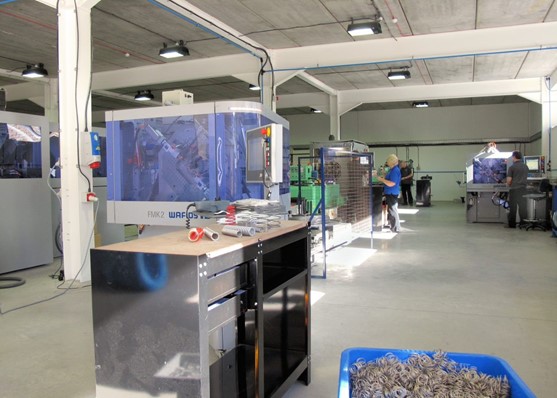Businesses must maintain high productivity and efficiency at all times while producing high-quality products that turn a profit. As spring manufacturers, we understand this is a lot to juggle and prioritise and can quickly become unmanageable for many small businesses.
Lean manufacturing is designed to eliminate waste within the system without compromising the quality of the products and the productivity of the manufacturing process. The goal is to simplify the process of the working environment. Here’s what you need to know about lean manufacturing and how you can implement it in your manufacturing operations.

What is Lean Manufacturing?
The concept of lean manufacturing comes from the Japanese manufacturing industry, specifically from the Toyota Production System (“The Toyota Way”), often touted as the most successful automotive manufacturers. The system is meant to do more with less: less human effort, less equipment, less space and less time. All while still providing the customer with exactly what they want.
Five fundamental principles define the process:
- Specify value – the value desired by the customer.
- Identify the value stream for each product – challenge all the wasted steps.
- Flow – ensure the product flows continuously through the remaining value-added steps.
- Pull production – introduce pull steps where continuous flow is possible.
- Pursue perfection – so the number of steps and time needed continually falls.
The process is founded on the idea that you make continuous and incremental improvements on products and processes while removing redundant activities. The “waste” is anything that does not add value to the customer, such as an activity, product, service or anything that requires an investment of time, money or skill.
By focusing on the process design and flow, manufacturers can create a system that makes more value and less waste. The Toyota Way defines seven types of waste:
- Overproduction
- Waiting
- Unnecessary transport/conveyance
- Overprocessing (or incorrect processing)
- Excess inventory
- Motion
- Defects
By eliminating this waste, Toyota became the giant it is today. If you would like to implement the system into your own manufacturing processes, here’s how you can get started.

How to Become a Leaner Manufacturer
Lean manufacturing is a continuous journey, not a destination. But you can start by thinking about your current processes and how you can most effectively streamline them to eliminate waste.
Eliminate Waste
Removing waste is the core principle of lean manufacturing. It’s a good idea to use a value stream to identify wasteful activities and decide on more efficient ways to add value to the production line. A value stream refers to the process of taking a customer request into a deliverable piece of value, and value stream mapping can be used to analyse the process and each of its steps so you can visually see your manufacturing processes and where waste occurs.
Reduce Unnecessary Stock
Overproduction is one of the critical waste points identified by the Toyota Way. Maintaining excess inventory will usually outweigh the benefits. It can tie up resources, slow down your response time and potentially cause issues in quality control. Your excess stock may also become obsolete, and then you have the wasted time and wasted space from producing and storing the surplus stock.
Shorten Production
To lean up your manufacturing, you need to reduce the time it takes to produce your products. Utilise all the amazing technology at your disposal and look into new equipment and machines that could help remove unnecessary steps and processes in your manufacturing operations. Consider switching to local suppliers for your raw materials so you can reduce unnecessary transportation of goods.

Contingency Plans for Stops
Stops in production will kill your productivity. Machine or equipment breakdown is a common cause of unexpected stops, so put contingency plans in place to avoid this where possible, such as performing preventative maintenance regularly on your machines.
Measure and Analyse Performance
Because lean manufacturing is a journey, you should be continually measuring and analysing how it’s going. Use your value stream map to get a clearer picture of your priorities and understand how the leaning process is affecting your operations. Measure your performance by evaluating any type of waste and how it burdens your business.
Corrective Actions
If your analysis shows that you have problems to solve or prevent, then now is the time to implement corrective actions to clear up any sore spots in your new, lean processes. This will involve some trial and error until you get to the point where you have effectively streamlined your manufacturing in line with the lean manufacturing principles.
Continuous Improvement
To work with lean manufacturing, you need to be prepared to make continuous improvements. Lean manufacturing is continuous improvement, whether it’s improving the product, redundant processes or excessive or inefficient activities. Whether a formal practice or a set of guidelines, your ethos of continuous improvement should be integrated into your business so it can work to make a meaningful difference.
At Airedale Springs, we implement sustainability into all our manufacturing practices with our A-rating for energy efficiency, recycling processes and 100% recyclable metal used in our springs, as well as our commitment to continue to reduce our environmental impact.


